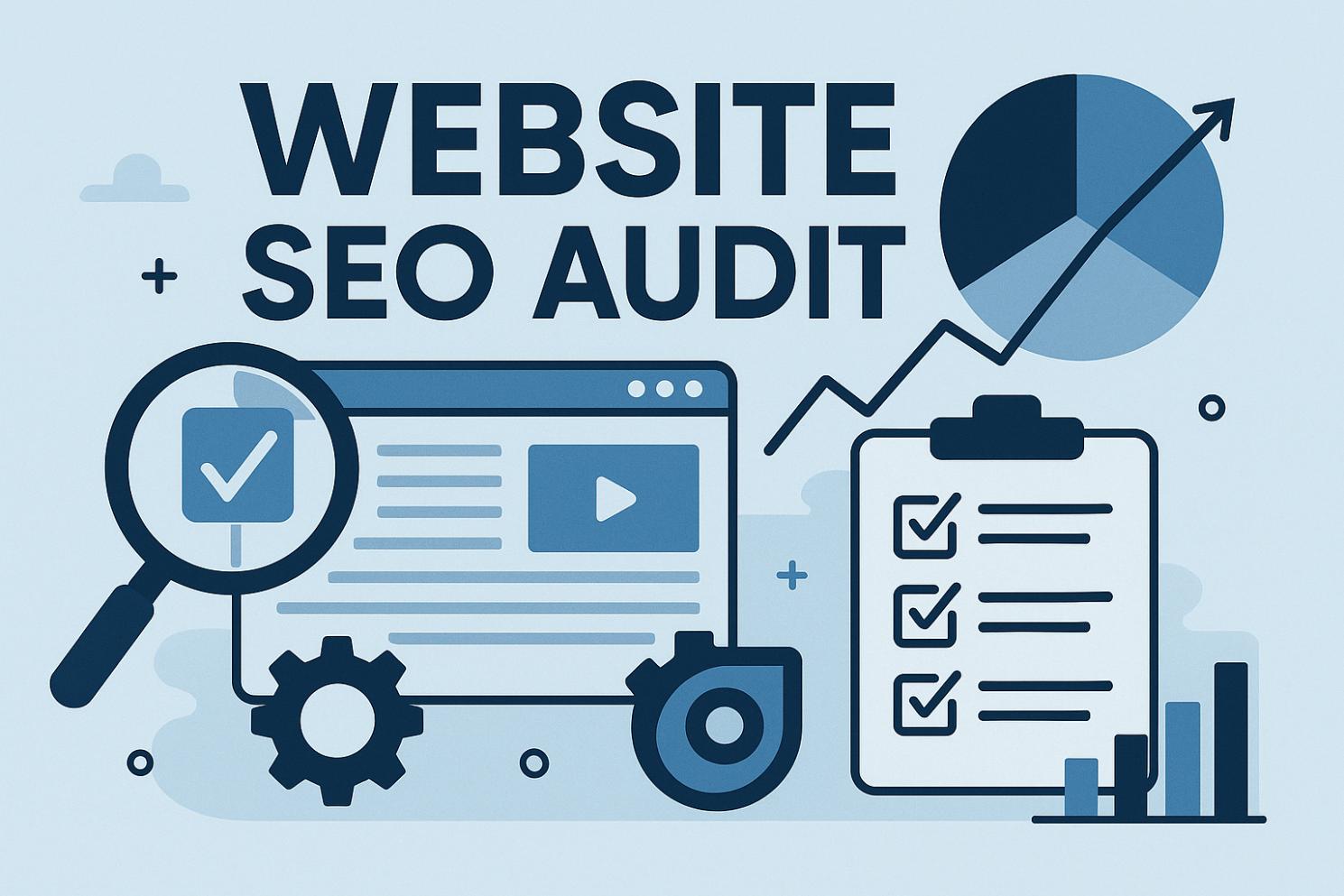The Ultimate Website SEO Audit Checklist for 2025 and Beyond
Introduction: Why a Website SEO Audit Matters
If your website isn’t being found on Google, it might as well not exist. In 2025, search engines are smarter than ever, and user expectations are higher. Ranking isn’t just about keywords anymore — it’s about providing a seamless experience, building trust, and showing authority. This is exactly why a Website SEO audit is crucial. Think of it like a full health check for your site: it highlights what’s working, what needs fixing, and what can be optimized to stay ahead of competitors.
Performing regular audits isn’t just a nice-to-have; it’s essential for businesses that want to thrive online. Whether you’re a small business owner or a marketing professional, auditing your website ensures your digital presence is fast, optimized, and future-proof.
If you want to understand SEO fundamentals first, check out NetFast’s Search Engine Optimization guide.
What Is a Website SEO Audit?
A Website SEO audit is a detailed analysis of your website’s performance across multiple areas. It identifies issues that could affect your visibility and rankings. Instead of guessing, an audit gives you a clear roadmap of improvements, from technical performance to content quality and user engagement.
An effective audit covers:
- Technical health (speed, indexing, mobile-friendliness)
- Content performance and relevance
- User experience and engagement signals
- Backlink profile and domain authority
In 2025, audits also help you adapt to AI-powered search, voice queries, and evolving ranking factors.
Step 1: Check Website Indexing and Crawlability
Before optimizing anything, ensure Google can actually find and understand your website. If your pages aren’t indexed, they won’t rank, no matter how good your content is.
Verify Index Status
Use tools like Google Search Console to check how many pages are indexed. Look out for:
- Pages marked as “Crawled – Not Indexed”
- Duplicate or thin content pages
- Important pages missing from search
For a deeper dive into SEO strategies, explore SEO Strategies 2025.
Step 2: Audit Website Speed and Core Web Vitals
Page speed is a silent ranking killer. Google evaluates user experience through Core Web Vitals, including:
- Page Load Speed
- Interaction to Next Paint (INP)
- Cumulative Layout Shift (CLS)
How to Test
Use Google PageSpeed Insights, GTmetrix, or Lighthouse to analyze your site. Focus on:
- Compressing images
- Minifying CSS and JavaScript
- Improving server response times
Fast-loading pages not only improve rankings but also increase conversions and user trust.
Step 3: Mobile-Friendly Design and User Experience
With most searches happening on mobile, a website that isn’t responsive can lose both rankings and customers.
What to Check
- Responsive design across devices
- Clickable buttons and clean navigation
- No intrusive pop-ups blocking content
Remember, user experience is now directly tied to SEO performance.
Step 4: Content Quality and Relevance
Content remains king. But in 2025, it’s not just about keywords; it’s about answering questions, solving problems, and engaging readers.
Questions to Ask
- Does each page answer a real user question?
- Are headings clear and keywords natural?
- Is the language accessible to readers without jargon?
To stay ahead with AI-driven content strategies, check out AI-Driven Content Marketing 2025.
Step 5: Keyword Optimization and Search Intent
Keywords must align with user intent. Google now prioritizes content that fully satisfies queries.
How to Optimize Naturally
- Use primary keywords like Website SEO audit in headings and early paragraphs
- Include relevant long-tail phrases naturally
- Avoid stuffing; focus on clarity and value
For advanced guidance, explore SEO Strategies 2025.
Step 6: Internal Linking and Site Architecture
Strong internal linking helps users navigate your site and improves SEO by signaling topic authority.
Best Practices
- Link high-traffic pages to deeper content
- Use descriptive anchor text like “AI content marketing trends”
- Include relevant NetFast pages naturally:
🔗 AI-Driven Content Marketing 2025
🔗 Answer Engine Optimization
🔗 Local SEO Helps Small Businesses
Step 7: Backlink Profile and Domain Authority
Backlinks remain a top-ranking factor. Quality matters more than quantity.
Audit Checklist
- Remove toxic or spammy links
- Focus on niche-relevant, high-authority sources
- Earn editorial links through guest posts and PR
Check out Top SEO Tools for monitoring backlinks effectively.
Step 8: Technical SEO Health
Technical issues can prevent crawlers from indexing your site properly.
Critical Areas
- XML sitemap: updated and clean
- Robots.txt: no accidental blocks
- Broken links and redirects
- Structured Data (Schema) for rich snippets
Structured data helps with AI and answer-driven search. Learn more at Answer Engine Optimization.
Step 9: User Engagement Metrics
Google evaluates how users interact with your site. Poor engagement can hurt rankings.
Metrics to Monitor
- Time on page
- Click-through rate
- Scroll depth
Better engagement improves visibility and signals that your content is valuable.
Step 10: Future-Proofing for AI & AEO
Search is evolving. AI and Answer Engine Optimization (AEO) are changing how content is discovered.
How to Prepare
- Write clear, answer-focused content
- Use structured headings and FAQs
- Keep language natural and conversational
Final SEO Audit Checklist
Indexing & crawl-ability
Core Web Vitals & speed
Mobile responsiveness
Content quality & relevance
Keyword optimization
Internal linking
Backlinks & authority
Technical SEO fixes
User engagement
AI & AEO readiness
Conclusion & Call to Action
A Website SEO audit isn’t a one-time task. Algorithms evolve, competitors grow, and user behaviour shifts. Regular audits keep your site fast, visible, and competitive.
Ready to take the next step? NetFast can perform a comprehensive SEO audit, implement fixes, and help your website stay future-proof. From technical optimizations to AI-ready content, we handle it all.Start your free consultation today:
Contact NetFast









